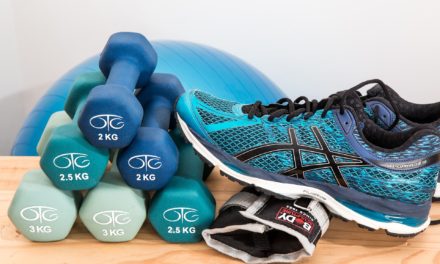[ad_1]
Every time you perform a set of reps, you're following a certain tempo. If asked what tempo their reps are performed at, most people will shrug or raise an eyebrow, since many people don't consider tempo when training. It's common for the average gym-goer to follow a typical 1010 tempo, meaning that they spend the same amount of time flexing the muscle being worked as they do relaxing it. For example, someone following a 1010 tempo spends as much time pushing up into a push-up as they do lowering themselves to the ground. A 1010 tempo is very typical for cardio workouts, since it increases activity and calories burned. For mass and strength gains however, your priorities should be different. Similar to how we decrease reps and increase weight for strength exercises, we also need to manipulate the tempo we do our reps at in order to maximize gains during workouts.
Before we dive too deep into an explanation of how to set the most effective tempo for strength gains, it's important to get an understanding of how tempo is measured in these cases. There are various tempos, so it's important to know what the numbers really mean. In the case of 1010, the first number defines the amount of time spent in the eccentric phase, or the “relaxing” phase of the exercise. The 0 indicates the amount of time spent pausing after the relaxation phase. The third digit signifies the length of time spent in the concentric phase, or the phase in which the muscle being exercised is flexed. The final digit signifies the amount of time spent pausing after the concentric phase. To help visualize this, in a pushup, the eccentric phase is bending your arms and lowering yourself toward the ground, and the concentric phase is pushing yourself back up. So, at a 1010 tempo, one second is spent going down, then one second is spent going up, with no pauses before or after either of these motions. For a 4010 tempo, 4 seconds are spent bending the arms and going down toward the ground, and one is spent pushing up. For exercises that demand explosiveness and fast flexing, the tempo may include an “X” instead of a number. This is commonly seen in the Olympics where X0X0 tempo lifts are commonly performed; explosive eccentric and concentric phases, with no pauses before or after either. For hypertrophy exercises and attempts at mass gain, the most effective and commonly used tempo is 40X0.
When taking tempo into consideration, changes can be made to the amount of time your muscles are spending under tension. Time Under Tension, or TUT, is a measure of how long a muscle, or group of muscles, is under the weight of the load. When it comes to strength training and maximizing muscle mass, more TUT is necessary. For strength training with kettlebells, 40-70 seconds of TUT is the optimal time period, anything shorter than this would result in lesser hypertrophic gains. Basic math can be done to see the difference in Time Under Tension between tempo and non-tempo training. Taking a look at the real-world variance in the different tempos that are used is a good way to paint a picture for why it's so important to include tempo training into your kettlebell workouts for strength gains. For a typical 1010 kettlebell overhead press for example, a single rep will take approximately one second to push and one second to relax, making the total length of the rep 2 seconds. Over the course of about 12 reps per set, this equates to 24 seconds of TUT. However, if you are adhering to tempo training, the length of a single rep will change. If switching to a 40X0 tempo kettlebell press, the flex will be immediate and there will be no pause at the apex before dropping the weight back down and relaxing for 4 seconds. When the kettlebell returns to the resting position, there is no pause and it is immediately lifted for the next rep. The total time for this rep is about 5 seconds, with a total of 60 seconds of TUT for a set of 12 reps. When taking tempo into account, the same weight, reps and sets can be used to achieve better strength training results. This is why tempo training is so important for real mass and strength gains. If you're only taking into account reps and sets and disregarding the time taken to complete each of these, you will be missing out on making large strength and mass gains in your kettlebell workout.
When your goals are to increase strength and mass, many people often increase the weight of the kettlebell that they are using and make adjustments to sets and reps to maximize muscle gains. Although this is an effective way to increase strength, it's important to note that tempo can also be altered to get the most out of each rep. Although it may take more concentration, tempo training is one of the most effective ways to successfully reach your strength training goals with kettlebells.
[ad_2]
Source by Amanda Perkins






